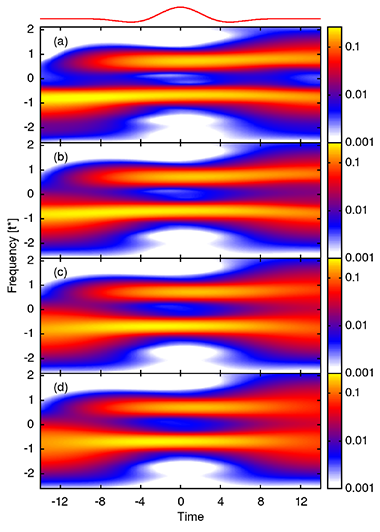Freericks Named Theory Lead on DOE X-Ray Team
September 10, 2018 — Professor James Freericks of the Georgetown College Department of Physics is part of a team that won a highly competitive research grant from the U.S. Department of Energy last month.
The $4.5 million dollar grant, of which Georgetown will receive $625,000, will provide funding for a postdoctoral fellow and a graduate student to work in Freericks’ laboratory over the next three years.
Freericks will work with a team of physicists from the Massachusetts Institute of Technology, Stanford University, and Los Alamos National Laboratory. The team aims to explore the frontiers of how x-rays can be used in solids.
ELECTRON SNAPSHOTS
The DOE grant funds some of the country’s leading experts on x-ray scattering to conduct research in preparation for the soon-to-be-upgraded Linac Coherent Light Source (LCLS), a machine at Stanford that produces the brightest source of ultrashort x-ray pulses for experiments in solid state materials. The machine is expected to be functional in two years’ time.
“X-rays, because their wavelength is similar to the spatial separation between atoms in a solid, can be used to measure the positions of atoms, how they move, and can also examine how electrons reflect x-rays — similar to how a mirror reflects light,” Freericks said.
The work that will be conducted using the LCLS takes place at extremely short time scales — less than the time it takes light to travel across the thickness of one hair.
“These experiments allow us to take snapshots of the behavior of electrons as they are excited by a pump pulse, then measured with a probe pulse after some short time delay,” Freericks said. “One can then show the images one after another to create some of the world’s shortest movies of quantum-mechanical behavior.”
NONLINEAR EFFECTS
Freericks and his colleagues will attempt to find more about how electrons behave when they are excited out of equilibrium — that is, when they are given a large amount of energy over a short time period.
This research occurs on the very frontiers of quantum mechanics, but it has implications for technology we already use in everyday life.
“Most electronic devices operate due to these so-called nonequilibrium or nonlinear effects,” Freericks said. “We want to study the basic science of these systems to be able to understand how we can control, tune, and engineer their behavior — and in the process, perhaps learn to build new electronic devices that cannot even be imagined today.”
BREAKING NEW GROUND
Freericks will serve as the team’s only theorist, driving the theoretical basis for the experiments that the team will develop. It’s his first time collaborating with the other members, and he serves an important role.
His “nonequilibrium dynamical mean-field theory,” developed in 2006, remains one of the most powerful computational methods for examining the pump/probe experiments the team will be conducting.
“In this project, our goal is to expand the types of experiments that can be described by these theories, and to also provide theory that describes the specific materials being examined in a given experiment,” Freericks said. “We’re hoping to break new ground in a number of different areas of x-ray science.”
— Patrick Curran
